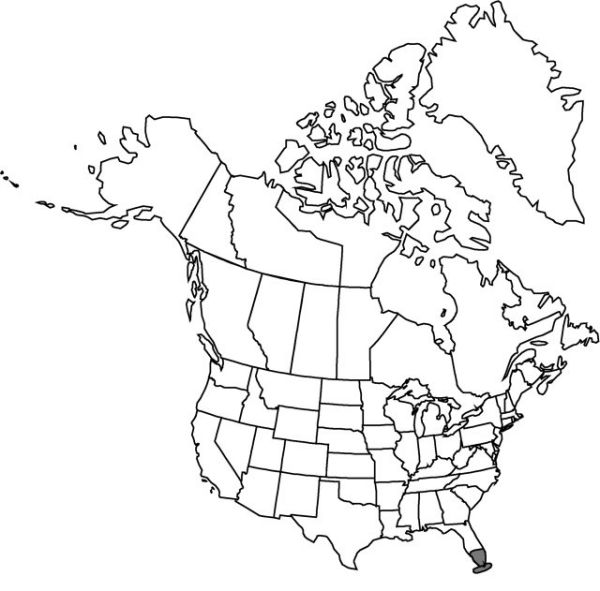Epidendrum nocturnum
Enum. Syst. Pl., 29. 1760.
Plant cespitose, to 100 cm. Roots basal, 1–2.5 mm diam. Stems unbranched, straight, terete proximally, compressed distally, to 90 cm. Leaves 4–10, evenly distributed on distal 1/2 of stem; petiole to 46 mm; blade elliptic, 2-lobed, 6–15 × 0.5–3 cm, leathery. Inflorescences nearly corymbose; peduncle zigzag, branching with time, greater than 5 mm, producing flowers over several years. Flowers resupinate, produced in succession, 1–2 at a time; sepals yellowish, narrowly linearlanceolate, to 60 × 6 mm, apex acute; petals yellowish, narrowly linearlanceolate, to 58 × 2 mm; lip white, deeply 3-lobed, middle lobe narrowly linear-acuminate, overall to 24 × 40 mm, lateral lobes obliquely semiovate; callus yellow; column 18 mm; clinandrium hood surpassing anther, erose; anther ovoid; ovary 45–50 mm. Capsules ellipsoid; pedicel 7–14 mm; body 25–32 × 10–15 mm; beak 16 mm.
Phenology: Flowering Sep–Mar; fruiting Jan–Apr, sporadically throughout year.
Habitat: Epiphytic on trees and palms in forests, hammocks, and swamps
Elevation: 0–30 m
Distribution

Fla., Mexico, West Indies, Central America, South America
Discussion
Epidendrum nocturnum is widespread and common throughout the tropical regions of the Western Hemisphere. Outside the flora area, the size of stems, leaves, and flowers is somewhat variable, and plants or whole populations often have cleistogamous flowers. A number of good species occur in the Neotropics. The length of the ovary and the pedicel of the capsule often are good specific characters.
Flowers are very fragrant at night, with an almost pungent scent.
Selected References
None.